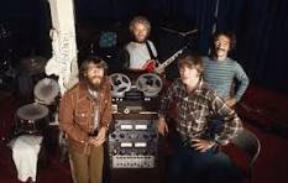


© 2022-2025 Lava-rox. All rights reserved.







Classic Rock’s Golden Years -
The 60’s part Two.
1968 was a significant year for heavy rock…
In 1968, Black Sabbath formed in Birmingham England. When Tony Iommi and Geezer Butler first met Ozzy, it did not go well. Geezer’s response was “Oh no, forget it, I know this guy’ and they walked away. According to Ozzy “I have no idea what I said to Tony outside my house that night to make him change [his] mind and give me a chance. I think the fact I had a PA system probably helped.” The first version of the band known as the “Polka Tulk Blues Band” featured a saxophonist and second guitar player. When they left, the band was renamed “Earth”. This didn’t last either as there was another band with this name. Finally they settled on “Black Sabbath” inspired by the 1963 Boris Karloff horror movie. Early on, they were asked to play at Stonehenge by Satanists. When they refused and were hexed, Ozzy asked his Dad to make aluminum crosses which were officially blessed and worn 24x7 for protection. Black Sabbath is credited with having perfected the “heavy metal” sound that would influence all metal bands of the 1980’s and 90’s including Iron Maiden, Metallica, Alice in Chains, and so many more. From left to right: Tony Iommi, Ozzy Osbourne, Bill Ward, and Geezer Butler. Ozzy was replaced by Ronnie James Dio ex Rainbow in 1979 and the “new” Black Sabbath released Heaven and Hell in 1980, one of their best selling albums. Ozzy would later reunite with his former band mates in 1997 at Ozzfest. Bill Ward fell ill prior to a world tour and was replaced by Vinnie Appice. At right are the band with Dio: left to right are Geezer Butler, Ronnie James Dio, Tony Iommi, and Vinnie Appice. Sabbath would continue touring and recording until 2015’s “The End” Tour. ---------------------------------------------------------------------------------------------------------------- In 1968, due to mismanagement and lack of interest, the Yardbirds were coming apart. When singer Keith Relf and drummer Jim McCarty walked away with tour dates still on the calendar, guitarist Jimmy Page quickly recruited phenomenal singer Robert Plant and John “Bonzo” Bonham on drums . Studio session man John Paul Jones on bass and keyboards was added and the band was complete, and continued the Yardbirds tour as “The New Yardbirds”. Controversy surrounds their new name. Upon hearing of their decision to play both hard rock and lighter acoustic selections, the Who’s Keith Moon allegedly joked that “it would go over like a lead balloon”. They wanted a really big balloon so that became a zeppelin and the name was shortened to “Led Zeppelin” which suited their musical duality. While on tour in Denmark in 1970, Eva von Zeppelin, heir to the inventor of the giant airships of the 1930’s threatened to sue the band over the use of her family name. The band decided to change it for the night of the Copenhagen show to “The Knobs”; a reference to male genitalia. November 1971: Led Zeppelin releases their anthem “Stairway to Heaven”. This mix of acoustic and and heavy sounds was a major influence for many other bands to come. Rolling Stone ranked “Stairway to Heaven” at number 31 on it’s list of greatest songs of all time. Despite pressure from Atlantic records, the band refused to allow editing of the eight minute track to create a single, making “Stairway” one of the most popular rock songs that was never released in that format. This track, more than any other, propelled them into international stardom and fame. Speaking of the song decades later, Jimmy stated “Robert was magnificent with his input of lyrics to the music of Led Zeppelin. It was a tricky thing to do because there was a lot of music and changes in it. I remember during that period, Robert, he was sort of sitting down, leaning against the wall, and he was just sort of, writing. I’ll never forget that image of him doing that. And then Robert comes up and starts to pitch in, and sing, and I tell you, 90 percent of the lyrics were already done.” Many have tried to analyze the lyrics to this megahit. When interviewed in 2022 Robert Plant said this: “I used to say it in Zeppelin, this is a song of hope. I set about trying to write something…where there’s some optimism and reflection from someone who was really not [old]. I was 23 or something like that. And so what do I think now? When I hear it in isolation, I feel overwhelmed. There was a mood and an air of trying to make it through. The world is a different place. Everybody was reeling from Vietnam and the usual extra helping of corruption with politics.” Led Zeppelin continued setting concert attendance records worldwide until the death of John Bonham in 1980. “Bonzo” allegedly consumed over 50 shots of Vodka in one evening just prior to going on tour that year. Left to right: John Paul Jones, Robert Plant, Jimmy Page, and John Bonham circa 1970. ----------------------------------------------------------------------------------------------------------------- Deep Purple also formed in 1968. Their initial style was more along the lines of a pop group with hit covers of “Hush” and Neil Diamond’s “Kentucky Woman”. In late 1969, without a breakthough hit the band felt a new heavier direction was needed and singer Rod Evans was pushed out. Bassist Nicky Simper also left Deep Purple at that time. They were replaced by Ian Gillan and Roger Glover helping to create their new sound, which was evident on their next two albums, In Rock and Fireball. They also developed a reputation for being the “loudest band in the world”. December 1971: Deep Purple Mk II records “Smoke on the Water” during their Machine Head sessions. “Smoke on the Water” was not the first single from the infamous LP. Released in 1973 it reached number 2 on the Canadian RPM charts and pushed the LP to the top 10 list. Total Guitar magazine ranked the opening riff number four on it’s Greatest Riffs Ever list. The riff inspired untold thousands of young musicians to pick up a guitar and master it. Ironically, “Smoke On The Water” was still climbing the charts when Ian Gillan and Roger Glover quit the band in 1973, leading to the MkIII formation featuring a very young David Coverdale on vocals and Glenn Hughes on bass. The song tells the true story of the destruction of the Montreux casino during a concert, where they were to record the upcoming LP. “Fire! If you’d kindly move calmly toward the exit, ladies and gentlemen. Calmly” announced Frank Zappa. After safely evacuating, the band watched the casino “burn to the ground”, resulting in “Smoke on the Water” over lake Geneva, and “Fire in the Sky” overhead The scene stuck with the band and they soon wrote what would become their most iconic hit song. Left to right MKII: Ritchie Blackmore, Ian Gillan, Roger Glover, Jon Lord, and Ian Paice in 1972. The Mk III version of Deep Purple with Coverdale and Hughes released Burn and Stormbringer and they played Cal Jam all in 1974. Both records charted well. Ironically, Ritchie Blackmore became unhappy with the changes he directed in the band and left in 1975 to form Rainbow with Ronnie James Dio. Deep Purple recruited Tommy Bolin and released Come Taste The Band in 1975 which featured a funkier sound but lacked lyrical creativity. After a disastrous tour, Bolin left the band and Deep Purple disbanded. Bolin died of a drug overdose in 1976. As with all things Purple, the story does not end here. Efforts to reunite the Mk II lineup succeeded in 1984 with the release of Perfect Strangers. It was a brilliant album with excellent performances by the band which drove the album to go Platinum. After more internal squabbles, Blackmore would leave again in 1994 and after a brief tour with Joe Satriani the sensational solo artist Steve Morse took over. The resulting Perpendicular album in 1996 was an exceptional technical record but failed to chart due to the popularity of the grunge movement. This Mk IV lineup proved to be the most stable and continued to tour and record until Steve Morse departed in 2022 due to a family illness. Deep Purple Mk IX are shown at right in concert. --------------------------------------------------------------------------------------------------------------- Meanwhile across the Atlantic, the American music scene was changing, especially on the west coast. Bands like Jefferson Airplane, Steppenwolf, the Byrds, The Doors, and the Grateful Dead were finding success and creating a new distinct American sound. In 1968, an unsigned and unknown band was offered a record contract. Not happy with their current name, they decided to change it and came up with Creedence Clearwater Revival, a combination of names and themes around them. Their self-titled debut LP was a smash introducing a new sound and style. Covers of “Suzie-Q” and I” Put A Spell On You” were instant hits. The band immediately started touring and singer/songwriter/guitar player John Fogerty went to work writing more of his own material. In 1969, the band recorded and released three chart topping albums: Bayou Country, Green River, and Willy and the Poorboys featuring smash hits such as “Proud Mary”, “Bad Moon Rising”, “Fortunate Son”, and a rockin’ cover of “Good Golly Miss Molly”. They ended the year with a bang performing at Woodstock. However John Fogerty felt that their performance was not sufficient, and they did not appear in the concert film. While the band continued recording and touring, divisions were appearing among the members. John had pretty much taken control of everything early on - and many would argue rightly so. He had a much better voice than his brother Tom, and no one could argue he was not a brilliant song writer. However after several years working together the rest of the band wanted more input. John finally agreed in 1972 and the band recorded Mardi Gras with each member singing and writing their own material. The album was a flop save for Johns hit single “Sweet Hitchhiker”. The band broke up shortly thereafter with much animosity and would only play together once more - at Toms wedding in 1980. CCR are shown at right, from left to right: Doug Clifford, Tom Fogerty, John Fogerty, and Stu Cook. The saddest part of this story is that John had signed away his rights to his songs in their contract, which was a major factor in their breakup, bitterness, and legal battles with Fantasy records. John would not play his songs again until 1987 - twenty five years after CCR broke up.



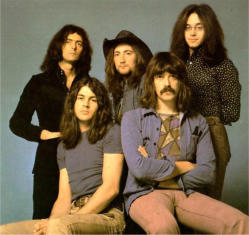

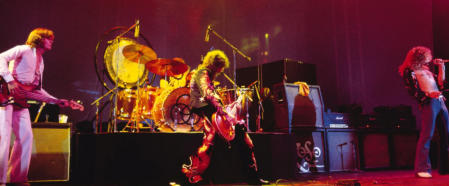
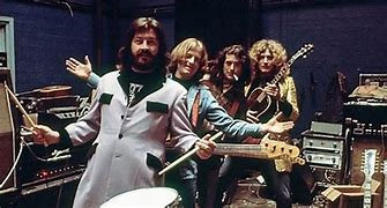
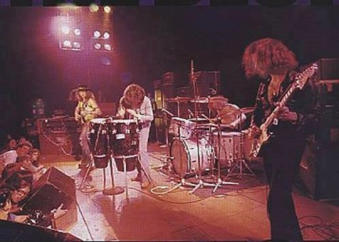
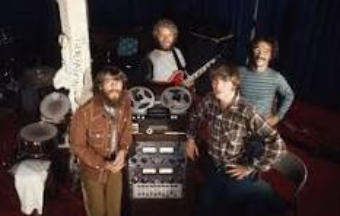
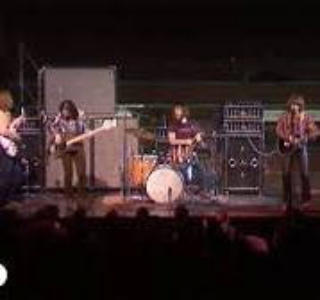
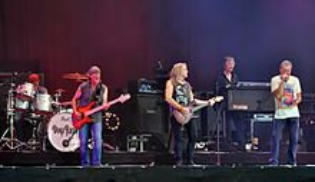
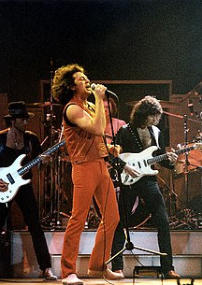
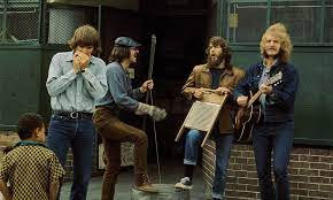
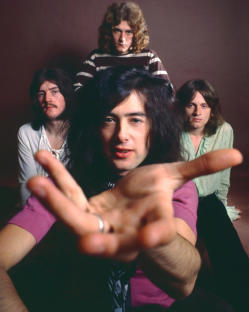
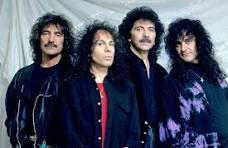







Classic Rock’s Golden Years -
The 60’s part Two.
1968 was a significant year for heavy rock…
In 1968, Black Sabbath formed in Birmingham England. When Tony Iommi and Geezer Butler first met Ozzy, it did not go well. Geezer’s response was “Oh no, forget it, I know this guy’ and they walked away. According to Ozzy “I have no idea what I said to Tony outside my house that night to make him change [his] mind and give me a chance. I think the fact I had a PA system probably helped.” The first version of the band known as the “Polka Tulk Blues Band” featured a saxophonist and second guitar player. When they left, the band was renamed “Earth”. This didn’t last either as there was another band with this name. Finally they settled on “Black Sabbath” inspired by the 1963 Boris Karloff horror movie. Early on, they were asked to play at Stonehenge by Satanists. When they refused and were hexed, Ozzy asked his Dad to make aluminum crosses which were officially blessed and worn 24x7 for for protection. Black Sabbath is credited with having perfected the “heavy metal” sound that would influence all metal bands of the 1980’s and 90’s including Iron Maiden, Metallica, Alice in Chains, and so many more. Pictured below are Toni Iommi, Ozzy Osbourne, Bill Ward, and Geezer Butler. Ozzy was replaced by Ronnie James Dio ex Rainbow in 1979 and the “new” Black Sabbath released Heaven and Hell in 1980, one of their best selling albums. Ozzy would later reunite with his former band mates in 1997 at Ozzfest. Bill Ward fell ill prior to a world tour and was replaced by Vinnie Appice. Sabbath would continue touring and recording until 2015’s “The End” Tour. ------------------------------------------------------------------------------------------------------- In 1968, due to mismanagement and lack of interest, the Yardbirds were coming apart. When singer Keith Relf and drummer Jim McCarty walked away with tour dates still on the calendar, guitarist Jimmy Page quickly recruited phenomenal singer Robert Plant and John “Bonzo” Bonham on drums . Studio session man John Paul Jones on bass and keyboards was added and the band was complete, and continued the Yardbirds tour as “The New Yardbirds”. Controversy surrounds their new name. Upon hearing of their decision to play both hard rock and acoustic lighter selections, the Who’s Keith Moon allegedly joked that “it would go over like a lead balloon”. They wanted a really big balloon so that became a zeppelin and the name was shortened to “Led Zeppelin” which suited their musical duality. While on tour in Denmark in 1970, Eva von Zeppelin, heir to the inventor of the giant airships of the 1930’s threatened to sue the band over the use of her family name. The band decided to change it for the night of the Copenhagen show to “The Knobs”; a reference to male genitalia. November 1971: Led Zeppelin releases their anthem “Stairway to Heaven”. This mix of acoustic and and heavy sounds was a major influence for many other bands to come. Rolling Stone ranked “Stairway to Heaven” at number 31 on it’s list of greatest songs of all time. Despite pressure from Atlantic records, the band refused to allow editing of the eight minute track to create a single, making “Stairway” one of the most popular rock songs that was never released in that format. This track, more than any other, propelled them into international stardom and fame. Speaking of the song decades later, Jimmy stated “Robert was magnificent with his input of lyrics to the music of Led Zeppelin. It was a tricky thing to do because there was a lot of music and changes in it. I remember during that period, Robert, he was sort of sitting down, leaning against the wall, and he was just sort of, writing. I’ll never forget that image of him doing that. And then Robert comes up and starts to pitch in, and sing, and I tell you, 90 percent of the lyrics were already done.” Many have tried to analyze the lyrics to this megahit. When interviewed in 2022 Robert Plant said this: “I used to say it in Zeppelin, this is a song of hope. I set about trying to write something…where there’s some optimism and reflection from someone who was really not [old]. I was 23 or something like that. And so what do I think now? When I hear it in isolation, I feel overwhelmed. There was a mood and an air of trying to make it through. The world is a different place. Everybody was reeling from Vietnam and the usual extra helping of corruption with politics.” Led Zeppelin continued setting concert attendance records worldwide until the death of John Bonham in 1980. “Bonzo” allegedly consumed over 50 shots of Vodka in one evening just prior to going on tour that year. Below from left to right are John Paul Jones, John “Bonzo” Bonham, Jimmy Page, and Robert Plant. ------------------------------------------------------------------------------------------------------- Deep Purple also formed in 1968. Their initial style was more along the lines of a pop group with initial hits covers of “Hush” and Neil Diamond’s “Kentucky Woman”. In late 1969, without a breakthough hit the band felt a new heavier direction was needed and singer Rod Evans was pushed out. Bassist Nicky Simper also left Deep Purple at that time. They were replaced by Ian Gillan and Roger Glover helping to create their new sound, which was evident on their next two albums, In Rock and Fireball. They also developed a reputation for being the “loudest band in the world”. December 1971: Deep Purple Mk II records “Smoke on the Water” during their Machine Head sessions. “Smoke on the Water” was not the first single from the infamous LP. Released in 1973 it reached number 2 on the Canadian RPM charts and pushed the LP to the top 10 list. Total Guitar magazine ranked the opening riff number four on it’s Greatest Riffs Ever list. The riff inspired untold thousands of young musicians to pick up a guitar and master it. Ironically, “Smoke On The Water” was still climbing the charts when Ian Gillan and Roger Glover quit the band in 1973, leading to the MkIII formation featuring a very young David Coverdale on vocals and Glenn Hughes on bass. The song tells the true story of the destruction of the Montreux casino during a concert, where they were to record the upcoming LP. “Fire! If you’d kindly move calmly toward the exit, ladies and gentlemen. Calmly” announced Frank Zappa. After safely evacuating, the band watched the casino “burn to the ground”, resulting in “Smoke on the Water” over lake Geneva, and “Fire in the Sky” overhead The scene stuck with the band and they soon wrote what would become their most iconic hit song. Below are the Deep Purple MKII lineup, from left to right: Jon Lord, Ian Gillan, Richie Blackmore, Ian Paice, and Roger Glover. The Mk III version of Deep Purple with Coverdale and Hughes released Burn and Stormbringer and they played Cal Jam all in 1974. Both records charted well. Ironically, Ritchie Blackmore became unhappy with the changes he directed in the band and left in 1975 to form Rainbow with Ronnie James Dio. Deep Purple recruited Tommy Bolin and released Come Taste The Band in 1975 which featured a funkier sound but lacked lyrical creativity. After a disastrous tour, Bolin left the band and Deep Purple disbanded. Bolin died of a drug overdose in 1976. As with all things Purple, the story does not end here. Efforts to reunite the Mk II lineup succeeded in 1984 with the release of Perfect Strangers. It was a brilliant album with excellent performances by the band which drove the album to go Platinum. After more internal squabbles, Blackmore would leave again in 1994 and after a brief tour with Joe Satriani the sensational solo artist Steve Morse took over. The resulting Perpendicular album in 1996 was an exceptional technical record but failed to chart due to the popularity of the grunge movement. This Mk IV lineup proved to be the most stable and continued to tour and record until Steve Morse departed in 2022 due to a family illness. ------------------------------------------------------------------------------------------------------- Meanwhile across the Atlantic, the American music scene was changing, especially on the west coast. Bands like Jefferson Airplane, Steppenwolf, the Byrds, The Doors, and the Grateful Dead were finding success and creating a new distinct American sound. In 1968, an unsigned and unknown band was offered a record contract. Not happy with their current name, they decided to change it and came up with Creedence Clearwater Revival, a combination of names and themes around them. Their self-titled debut LP was a smash introducing a new sound and style. Covers of “Suzie-Q” and I” Put A Spell On You” were instant hits. The band immediately started touring and singer/songwriter/guitar player John Fogerty went to work writing more of his own material. In 1969, the band recorded and released three chart topping albums: Bayou Country, Green River, and Willy and the Poorboys featuring smash hits such as “Proud Mary”, “Bad Moon Rising”, “Fortunate Son”, and a rockin’ cover of “Good Golly Miss Molly”. They ended the year with a bang performing at Woodstock. However John Fogerty felt that their performance was not sufficient, and they did not appear in the concert film. While the band continued recording and touring, divisions were among the members. John had pretty much taken control of everything early on - and many would argue rightly so. He had a much better voice than his brother Tom, and no one could argue he was not a brilliant song writer. However after several years working together the rest of the band wanted more input. John finally agreed in 1972 and the band recorded Mardi Gras with each member singing and writing their own material. The album was a flop save for Johns hit single “Sweet Hitchhiker”. The band broke up shortly thereafter with much animosity and would only play together once more - at Toms wedding in 1980. The saddest part of this story is that John had signed away his rights to his songs in their contract, which was a major factor in their breakup, bitterness, and legal battles with Fantasy records. John would not play his songs again until 1987 - twenty five years after CCR broke up. CCR are shown below, from left to right: Doug Clifford, Tom Fogerty, John Fogerty, and Stu Cook. Additional graphics available at higher screen resolutions, such as tablets, laptops, and desktops.
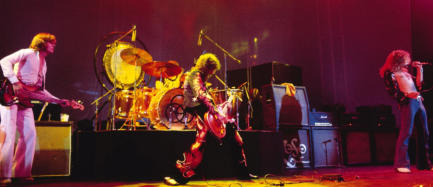


© 2022-2025 Lava-rox. All Rights Reserved.
